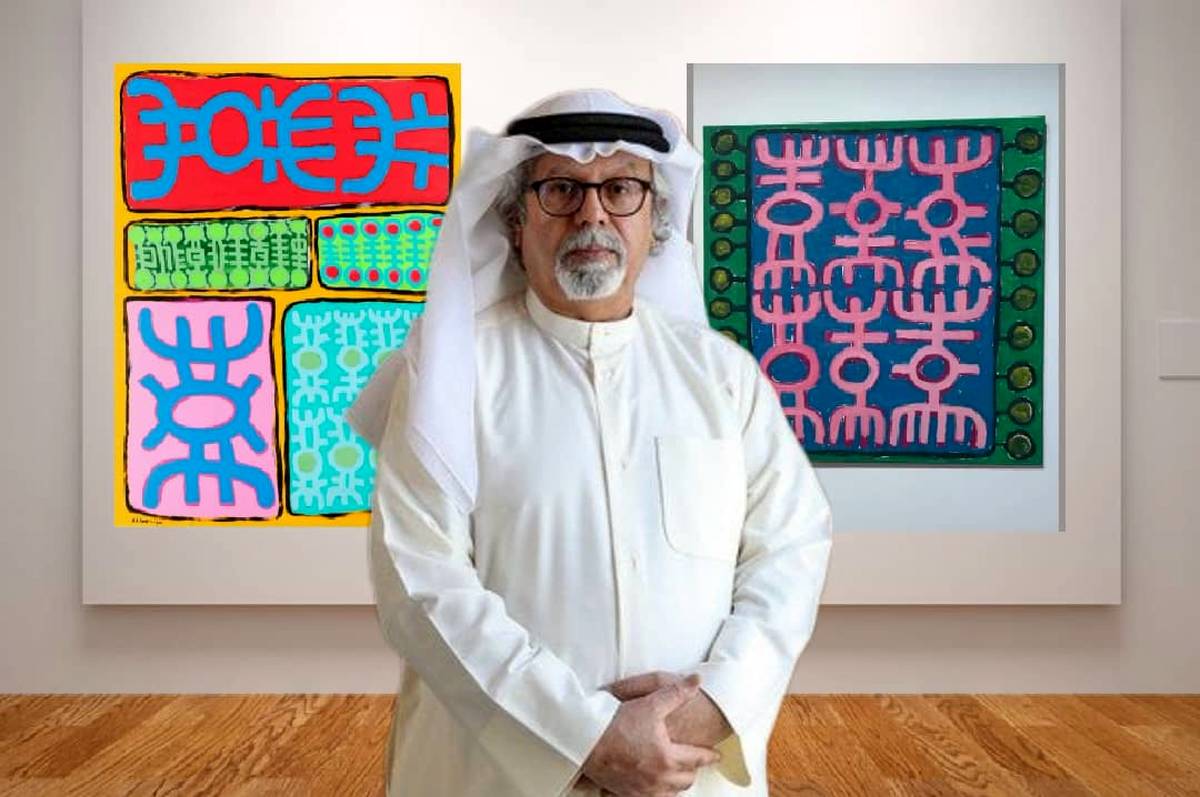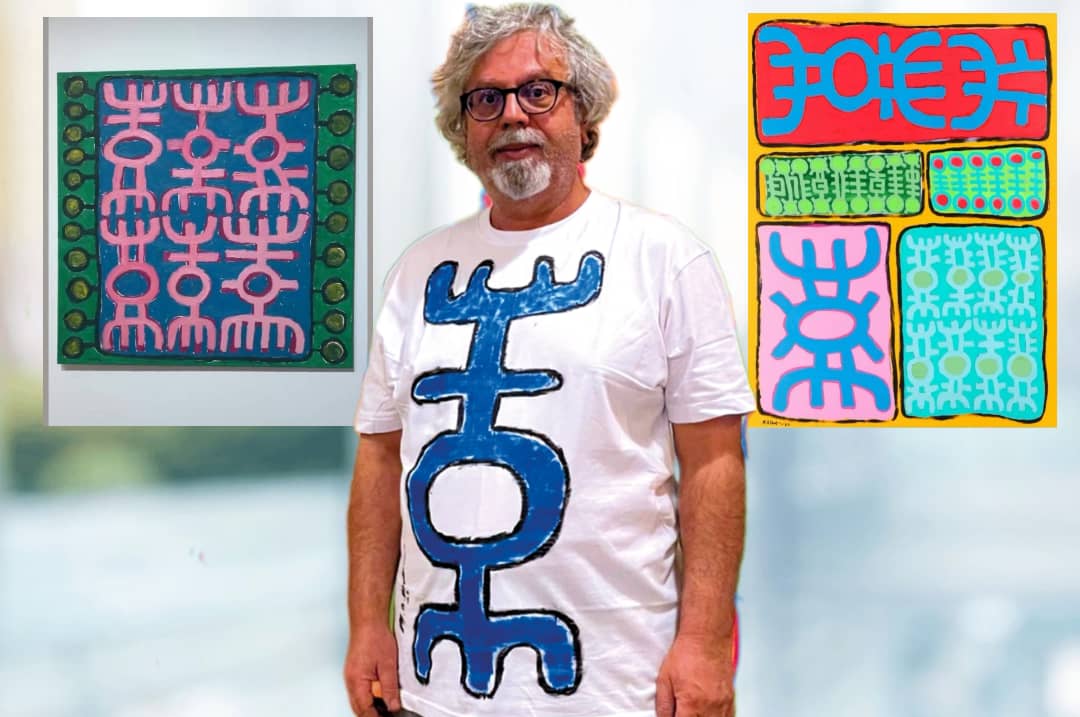
Mohamed Ahmed Ibrahim: Nature, Memory, and Symbols
On the shores of Khorfakkan, where mountains meet the sea, Mohamed Ahmed Ibrahim has spent a lifetime listening to the land. In the wind-scoured cliffs and shifting tides, he finds the shapes, colors, and rhythms that have become the heartbeat of his art—whether painted on canvas or formed into sculptures that seem as if they were unearthed from another time.
ArtDayMe :Azadeh Jafarian : In the sunlit coastal town of Khorfakkan, where the Gulf of Oman laps against the shore and the rugged Hajar Mountains rise in the distance, the life and art of Mohamed Ahmed Ibrahim have taken root. A pioneering figure in the UAE’s first generation of contemporary artists from the late 1980s—alongside Hassan Sharif, Abdullah Al Saadi, Hussein Sharif, and Mohammed Kazem—Ibrahim has built a visual language steeped in the rhythms of his homeland.
For more than three decades, his practice has revolved around a deep and meditative engagement with nature. His handmade objects resemble unearthed relics—primitive tools, bone fragments, or pieces of driftwood—while his drawings and paintings hum with patterns that evoke ancient cave markings. In Ibrahim’s world, art is not so much created as discovered, as though he is revealing something long buried in the collective memory.


A Visual Language of Symbols
One of Ibrahim’s most striking works presents a grid of repeated organic forms—symbols that hover between human figures, plant life, and archaic script. Executed in bold strokes and radiant colors—turquoise, scarlet, lemon yellow, and verdant green—the piece commands the eye through its repetition. Each motif is outlined in thick black, giving the composition a graphic clarity, almost like a contemporary echo of ancient petroglyphs.
The influence of Khorfakkan’s landscapes is unmistakable. The rhythmic arrangement of forms mirrors the pulse of waves or the slow layering of geological time in the mountains. The grid structure introduces order, yet the hand-painted irregularities keep the work alive with human warmth. It is a visual meditation on the balance between nature’s patterns and human mark-making.
Color, Chaos, and Harmony
In another painting, Mohamed Ahmed Ibrahim shifts from the grid to a looser, more expansive composition. Here, thickly applied paint—almost sculptural in its texture—creates a tactile surface. Shapes emerge like fossils from stone: some suggest plants or microorganisms; others, fragments of an unfamiliar alphabet.

The color palette is no less vibrant: lush greens meet deep blues, with flashes of pink and orange. This chromatic intensity speaks of vitality, yet the deliberate repetition of forms grounds the work in calm. There is a sense of continuity—as if each mark belongs to a longer story that began long before the artist’s brush touched the canvas.
Rooted in Place, Speaking to the World
While Ibrahim’s art is deeply Emirati in its cultural roots, it is also strikingly universal. The forms may remind one viewer of cave drawings, another of ancient maps, and yet another of neural pathways. His work invites open interpretation, transcending geography and language.
Sociologically, Ibrahim’s contribution to the UAE’s art scene cannot be overstated. At a time when regional art was often defined by traditional motifs or literal representation, he embraced abstraction—connecting Emirati heritage to a global conversation in contemporary art. In doing so, he helped carve a space for conceptual and experimental practices in the region.

Mohamed Ahmed Ibrahim’s paintings feel like time capsules cracked open—bridges between ancient memory and modern expression. They remind us that history is not static; it pulses in the present, ready to be rediscovered in color, line, and form. From Khorfakkan’s mountains to the world’s galleries, his symbols speak a language we somehow already know.
Drawing from the spirit of his expressive abstract paintings, Mohamed Ahmed Ibrahim has also created sculptures—works that speak in their own way and have garnered a devoted following.


LEAVE A RELPY